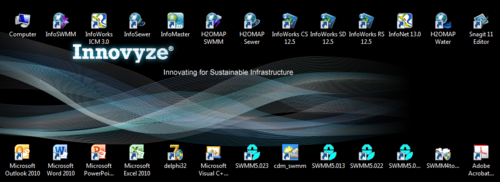Note: My Current Job Title and Email Address and of course Robert.dickinson@gmail.com will also work to contact me if you have a modeling question.

Robert Dickinson
Visit the Innovyze Blog for in-depth discussions of product features, insightful videos, and links to industry news (at blog.innovyze.com)
Product Sector Leader for InfoSWMM , InfoSewer and InfoSWMM 2D Innovyze Inc.
9340 Pontiac Drive Tel: 813-712-0664 Tampa, Florida USA 33626




